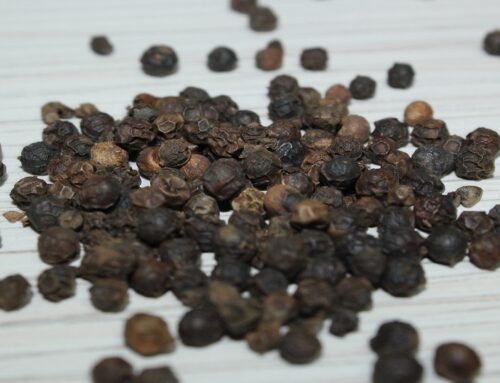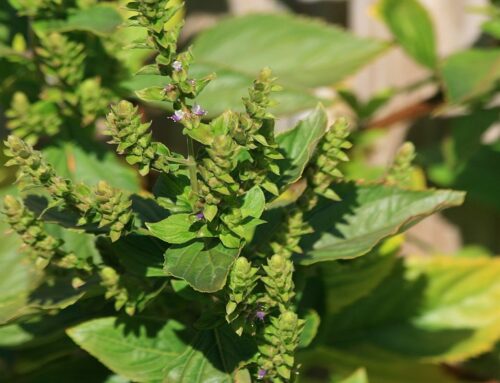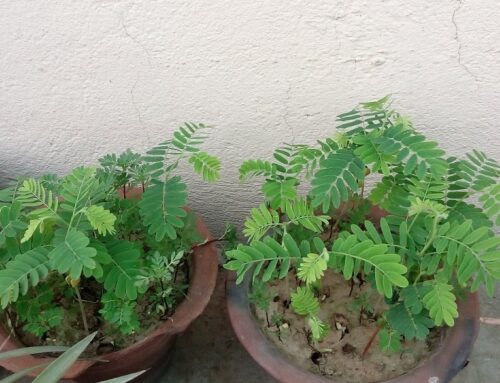Apple Mint: Apple mint is Mentha suaveolens. It is an erect-growing herbaceous, perennial plant. It grows up to a height of 45-60 centimeter upon full growth. Leaves are light green in colour, oppositely arranged, hairy, wrinkled, oblong to nearly ovate in shape and with serrated leaf margins and rounded leaf tips. White or pinkish flowers are borne on terminal spikes. Bloom time is mid to late summer to early fall. This mint variety is suitable for growing in containers.
Origin and Distribution: Apple mint is native to southern and western Europe and the western Mediterranean region. It is naturalized in central and northern parts of Europe.
Growing Apple mint: Growing practices for apple mint is similar to that of other mint varieties.
Uses: Apple mint is mainly grown for its aromatic foliage which is used as a culinary herb. It is also used as an ornamental plant and as a ground cover. Fresh leaves are used to make apple mint jelly. It is used to make mint tea, as a garnish or flavouring agent and in soups and salads.
Bergamot Orange Mint: Scientific name of bergamot mint is Mentha citrata. Leaves of bergamot mint have a characteristic lemon-like or orange-like odor when crushed and therefore it is also known as orange mint or lemon mint. It is a perennial aromatic herb that is robust in growth and grows up to 90 cm upon full growth. Leaves are broad and ovate but without a distinct inflorescence. The flowering vertices are borne in terminal axils of leaves. Flower colour is violet or lavender. Bloom time is late summer to early fall. It is a suitable mint variety for container gardening.
Growing Bergamot Orange Mint: A cool, temperate and sub-temperate climate with a day temperature of 20–25°C is the most ideal requirement. Well-drained, rich sandy-loam to clay-loam soils are most ideal. Soil pH requirement is about 6 to 8. These mint herbs prefer sunny locations and light shade. Propagation is done by dividing the root ball (rhizomes), from herbaceous stem cuttings and by seeds. Seed propagation is possible. In seed propagation, seeds are allowed to dry on plants before collecting them. While planting, plants are spaced at 60-90 cm apart.
All growing practices such as land preparation, fertilizer application, irrigation, weed control, and disease-pest management practices are similar to that of other mint varieties. Upon harvesting the plant yields fresh herbage@15-20 tons/acre/annum in 2 harvests. Yield of oil is approximately 150 liters of oil/hectare. The oil contains 45–50% linalool and up to 45% linalyl acetate.
Medicinal Uses: Bergamot mint oil is analgesic (which alleviates pain) and antispasmodic (which stops muscle spasms). Bergamot mint oil is also carminative (which soothes the digestive system) and laxative (which clears congestion in the bowels). Bergamot mint oil is rubefacient, which improves skin blood circulation. Mint tea is made from the fresh or dried bergamot mint leaves, which is a natural remedy for fevers, headaches, stomach aches, nausea and other digestive disorders.
Field Mint or Corn Mint: Corn mint is Mentha arvensis. It is mainly grown for its aromatic foliage. It is an erect growing mint variety which reaches up to 60 cm in height upon full growth. It produces stalk less leaves with toothed leaf margins. Bloom time is mid-summer or late-summer to early fall or mid fall. Bloom color is pale pink.
Growing Practices: Growing practices for field mint is similar to that of other mint varieties.
Uses: Corn mint leaves are mainly used for culinary purposes as a garnishing and flavouring agent. It is also used in salads, sauces, soups, and meat preparations.
Horse Mint: Horsemint is Mentha longifolia. As the name suggests, this mint plant has long, narrow leaves. It is an herbaceous perennial plant mainly grown for its fresh foliage. This is a musky pungent herb with a peppermint-scented aroma and is grown for both culinary and medicinal purposes. Both fresh and dried herbs are used in various food preparations and cocktail drinks.
Stems are erect, sometimes creeping and stem reaches up to a height of 120 cm on full growth. Leaves are oblong-elliptical to lanceolate in shape with green colour on upper side and white colour below. Bloom time is mid to late summer and flower colour is lilac, purplish, or white. Flower clusters are produced on tall, branched, tapering spikes.
Origin and Distribution: Horsemint is believed to be a native of regions comprising of Europe, western and central Asia, and northern and southern Africa.
Growing Horsemint: Growing practices for horsemint is similar to that of other mint varieties.
Uses of Horsemint: Horsemint leaves are used as an antiseptic, stimulant and are also useful as a decoction to help cure fevers, stomach ailments, nausea, coughs, colds, asthma, muscle cramps and digestive disorders.
Japanese Mint: Scientific name of Japanese mint is Mentha arvensis var. piperascens. It is a vigorously growing, branched, hardy perennial plant which reaches up to a height of 1 meter upon maturity. Violet tinged quadrangular stems bear broadly ovate leaves; lilac-coloured flowers are borne in axillary and terminal flowering spikes.
Growing Japanese Mint: Growing practices for Japanese mint is similar to that of peppermint. In fact, Japanese mint is mainly grown as a substitute of peppermint. Just like peppermint, Japanese mint is also grown for its aromatic leaves which are rich in essential oil, menthol. Just like peppermint oil, Japanese mint oil also contain up to 75–80% menthol and menthone content. Even though Japanese mint oil can be used as a substitute for peppermint oil, the latter has a superior odor and fetches higher price in the market than Japanese mint oil.
We have a book on ‘Mint Herbs‘….
Check out our publishing services here…
We publish top quality videos on various ‘Food & Agriculture’ topics. You may subscribe our video channel here…






